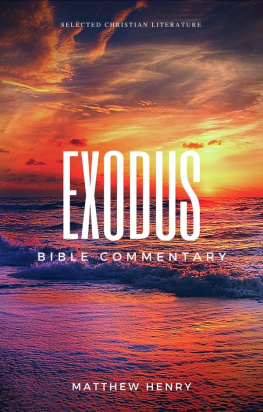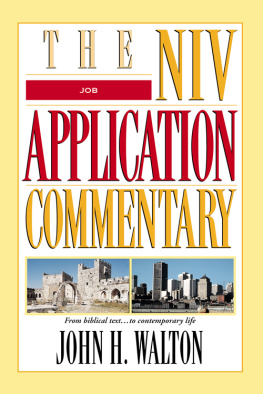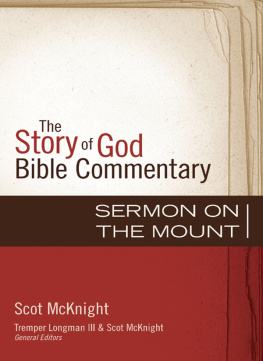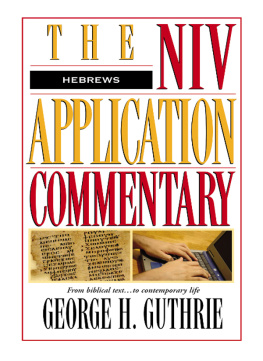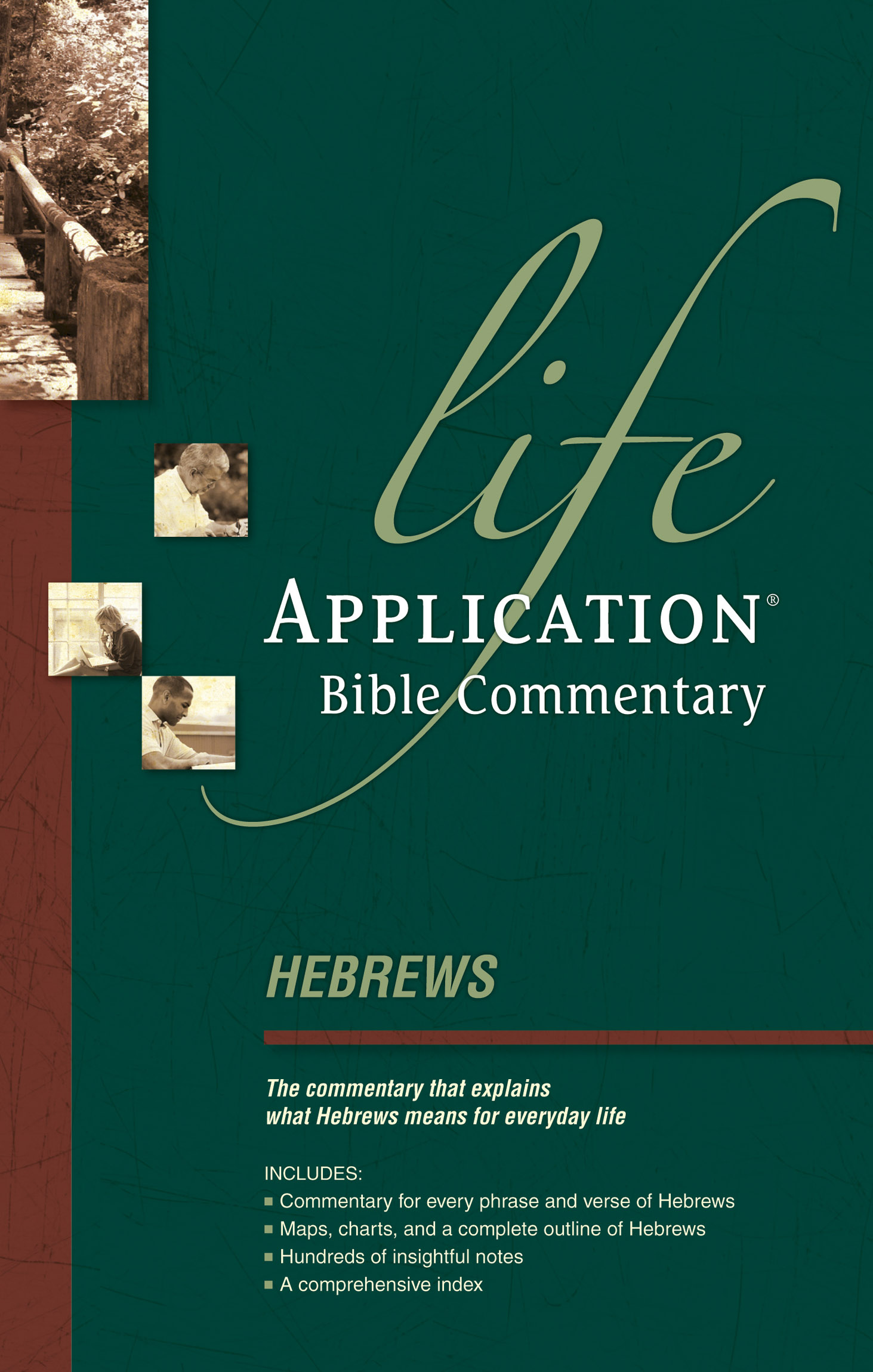Visit Tyndale online at www.tyndale.com.
Life Application Bible Commentary: Hebrews
Copyright 1997 by The Livingstone Corporation. All rights reserved.
Contributing Editors: James C. Galvin, Ed.D., and Ronald A. Beers
Cover photograph of bridge and path copyright by Alyn Stafford / iStockphoto. All rights reserved.
Cover photographs of woman with a laptop and man holding a pen copyright by Dan Wilton / iStockphoto. All rights reserved.
Cover photo of man reading copyright by Ronnie Comeau / iStockphoto. All rights reserved.
Scripture quotations marked NIV are taken from the Holy Bible, New International Version. NIV. Copyright 1973, 1978, 1984 by International Bible Society. Used by permission of Zondervan. All rights reserved.
Scripture quotations marked NKJV are taken from the New King James Version. Copyright 1979, 1980, 1982 by Thomas Nelson, Inc. Used by permission. All rights reserved.
Scripture quotations marked NRSV are taken from the New Revised Standard Version of the Bible, copyright 1989, Division of Christian Education of the National Council of the Churches of Christ in the United States of America. Used by permission. All rights reserved.
(No citation is given for Scripture text that is exactly the same wording in all three versionsNIV, NKJV, and NRSV.)
Scripture quotations marked KJV are taken from the Holy Bible, King James Version.
Scripture quotations marked NLT are taken from the Holy Bible, New Living Translation, copyright 1996, 2004, 2007 by Tyndale House Foundation. Used by permission of Tyndale House Publishers, Inc., Carol Stream, Illinois 60188. All rights reserved.
TYNDALE, Life Application, New Living Translation, NLT, and Tyndales quill logo are registered trademarks of Tyndale House, Publishers, Inc.
Library of Congress Cataloging-in-Publication Data
Barton, Bruce B.
Hebrews / Bruce B. Barton, Dave R. Veerman, Linda K. Taylor ; editor,
Philip W. Comfort.
p. cm. (Life application Bible commentary)
Includes bibliographical references and index.
ISBN 978-0-8423-2856-2 (pbk. : alk. paper)
1. Bible. N.T. HebrewsCommentaries. I. Veerman, David. II. Taylor, Linda K.
III. Comfort, Philip Wesley. IV. Title. V. Series.
BS2775.3.B37 1997
227'.87077dc2196-53647
Build: 2020-09-28 22:39:48 EPUB 3.0
FOREWORD
The Life Application Bible Commentary series provides verse-by-verse explanation, background, and application for every verse in the New Testament. In addition, it gives personal help, teaching notes, and sermon ideas that will address needs, answer questions, and provide insight for applying the word of God to life today. The content is highlighted so that particular verses and phrases are easy to find.
Each volume contains three sections: introduction, commentary, and reference. The introduction includes an overview of the book, the books historical context, a time line, cultural background information, major themes, an overview map, and an explanation about the author and audience.
The commentary section includes running commentary on the Bible text with reference to several modern versions, especially the New International Version, the New Revised Standard Version, and the New Living Translation, accompanied by life applications interspersed throughout. Additional elements include charts, diagrams, maps, and illustrations. There are also insightful quotes from church leaders and theologians such as John Calvin, Martin Luther, John Wesley, and A. W. Tozer. These features are designed to help you quickly grasp the biblical information and be prepared to communicate it to others. The reference section includes an index and a bibliography.
INTRODUCTION
Faced with the choice of something good or something obviously bad, only a foolish or misguided person would choose bad. Good should win every time.
At the next level, however, choices become more difficultdeciding between good and better. Again in this case, the logical choice would seem to be better, but the choice is not as clear-cut as in the former situation: The differences between the two options may seem insignificant, the reasons for choosing what purports to be better may be unconvincing, and staying with the familiar good may feel comfortable and convenient. Thus, faced with keeping the good or moving up to better, many people stick with what they have, because, after all, its not bad.
The next choice is even more difficultdeciding between better and best. Again, the obvious choice should be best every time, but many miss what is best and settle, instead, for better or simply good. For them it is better to stay with what they know.
The writer of the letter to the Hebrews had to convince the readers to settle for nothing less than Gods very best for their lives. Jews were familiar with Gods goodness and perfection. After all, they were his chosen people, and through them God had communicated his love and plan for the world. They were the recipients of the covenant, the law, the tabernacle, and profound religious rituals, and they had been blessed with prophets proclaiming Gods messages and priests doing Gods work. Judaism was Gods way, and it was good.
But Jesus, the Christ, had come, fulfilling the law, making the perfect sacrifice, and initiating the new covenant. Christ was a better prophet, a better priest, and a better sacrifice. In fact, he was the ultimate, the best. Many Jews had embraced this new way, expressing faith in Christ (Messiah) as Savior and Lord. Yet the familiar, good Judaism continued to draw them back. Some returned to the old way, and others attempted to combine the old with the new, forming a hybrid of Judaism and Christianity. And so they missed Gods best.
Hebrews is a masterful document written to Jews who were evaluating Jesus or who were struggling with the Christian faith. The message of Hebrews is that Jesus is better, Christianity is superior, and Christ is supreme and completely sufficient for salvation.
As you read Hebrews, catch the profound message of this important book. Judaism may not be calling you back, but many other gods and belief systems clamor for attention and push for allegiance. Regardless of their claims and promises, know that only Jesus is the truth, and only he brings life. Jesus is the best, the only way (John 14:6). Dont settle for anything less!
AUTHOR
The authorship of Hebrews has been in doubt since its publication. In fact, none of the early writers who refer to this book mention its author. And no one since early times has been able to identify the author.
Hebrews names no one as author. This is unusual for a letter, especially if Paul had written it. (His letters usually bear his name and personal greetings to the readers.) In fact, the only ancient title for this book is simply To Hebrews, and that may not have been on the original, since all of the manuscripts with that title date after the first century A.D. , the original having been written in about A.D. 60.
The inclusion of Hebrews into the New Testament canon came from the Eastern church as early as A.D. 185, mainly because of the traditional belief that Paul had written it. Clement of Alexandria described his teachers (Pantaenuss) explanation for why Paul did not use his own name in this letter. Pantaenus surmised that Paul refrained from mentioning his name out of reverence to the Lord, who himself had been their Apostle (3:1). Clement accepted this explanation and proposed that the original had been written in Hebrew (Aramaic) and Luke had translated it into Greek. But this is conjecture.




